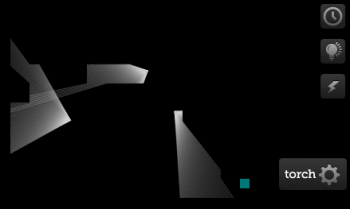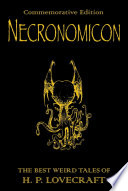-
-
Multi-user pages
Whenever I'm away from home, my usual stream of random ideas tends to become more focused on projects involving sharing. Usually something about creating a connection between people where the interaction point is the Internet. This is what first inspired the now defunct MonkeyTV project back in 2007 or noodler.net in 2008 – both created while I was living in Tokyo as ways to connect to people back in Edinburgh.
Until the beginning of August, I'm in Berlin finding somewhere to live while Jenni and Oskar are in Edinburgh packing up our flat (although, I'm not entirely sure Oskar is doing much more than drooling over packing boxes). The result of this is that I started to wonder about how to best show Jenni some of the flats I'm looking at remotely. What I figured I wanted was a way for us both to be looking at the same web page and for each of us to be able to point out things to the other. I tidied up my idea and posted it to the Made By Ideas site hoping that someone else would run off and make it so I could focus on apartment hunting.
The inevitable happened, I couldn't let it lie:
Multi-user page (installable bookmarklet).
If you install that bookmarklet by draggin’ it to your bookmarks bar then launch it anywhere, your cursor position and how far you've scrolled the page will be sent to anyone else viewing the same page who has also launched it. If you launch it on this page just by clicking it just now, you'll see cursors from other people reading this post who've also clicked it.
Technical
This is built in node.js with socket.io.
It heavily reuses Jeff Kreeftmeijer's multiple user cursor experiment but updated to use socket.io v0.7. I also used the socket.io 'rooms' feature to contain clients to a given window.location.href so that it could be launched on any page and interactions would only appear to users on that same page. I also removed the 'speak' feature to simplify things. I'm planning on talking via Skype when I'm using it. In theory, mouse events other than cursor coordinates and scroll could be shared – keyboard input, clicks, selects.
The day after I built this, Christian Heilmann pointed out on twitter a different solution to the same problem. Browser Mirror uses the same technology (node + websockets) but instead of passing cursor positions, it passes the entire DOM of the page from the instigator's computer to their node relay and then out to any invited viewers. This approach gets round a lot of the problems and is probably a more robust solution, all in all. They also have an integrated chat feature.
Warning
The server side is running on a borrowed VPS. It's not even been daemonised using Forever so it might fall over and not come back up. Don't rely on this for anything, just think of it as a point of interest.
The Code
I'm not really going to do any further development with it but for interest, here's the node.js server, almost entirely Jeff Kreeftmeijer's work but updated for the latest socket.io
var sys = require('sys'), http = require('http'), io = require('socket.io').listen(8000), log = sys.puts; io.sockets.on('connection', function (socket) { socket.on('set location', function (name) { socket.set('location', name, function () { socket.emit('ready'); }); socket.join(name); }); socket.on('message', function (request) { socket.get('location', function (err, name) { if(request.action != 'close' && request.action != 'move' && request.action != 'scroll') { log('Invalid request:' + "\n" + request); return false; } request.id = socket.id; socket.broadcast.to(name).json.send(request); }); }); socket.on('disconnect', function () { socket.broadcast.json.send({'id': socket.id, 'action': 'close'}); }); });And here's a bit of the client-side JS that I modified to connect via socket.io v0.7 (again, modified from Jeff Kreeftmeijer's):
var socket = io.connect('http://yourserver.com', {port: 8000}), socket.on('connect', function() { socket.emit('set location', window.location.href); socket.on('message', function(data){ if(data['action'] == 'close'){ $('#mouse_'+data['id']).remove(); } else if(data['action'] == 'move'){ move(data); } else if(data['action'] == 'scroll'){ clearTimeout(noscrolltimeout); disabled = true; scroll(data); noscrolltimeout = setTimeout('disabled = false;',2000); }; }); });If you'd like to snoop around the code more, it's all available on the lab: Multi-user pages
-
Torch
Concept
Another proof-of-concept game design prototype. This is kind of a puzzle game. Ish. It's mostly a simple maze game but one in which you can't see the walls. You can see the goal all the time but you are limited to only being able to see the immediate area and any items lit up by your torch. You control by touching or clicking near the torch. The character will walk towards as long as you hold down. You can move around and it'll follow.
The first 10 levels are very easy and take practically no time at all. After that, they get progressively harder for a while before reaching a limit (somewhere around level 50, I think). The levels are procedurally generated from a pre-determined seed so it would be possible to share high scores on progression or time taken without having to code hundreds of individual levels.
Items that could be found around the maze (but aren't included in this prototype) include:
- Spare torches which can be dropped in an area and left to cast a light
- Entrance/exit swap so that you can retrace your steps to complete the level
- Lightning which displays the entire maze for a few seconds (but removes any dropped torches)
- Maze flips which flip the maze horizontally or vertically to disorient you.
I worked on this for a few months (off and on) and found it to be particularly entertaining with background sound effects of dripping water, shuffling feet with every step, distant thunder rumbling. It can be very atmospheric and archaeological at times.
Half-way through a level, two torches dropped 
Slightly technical bit
The game loop and draw controls are lifted almost line-for-line from this Opera Dev article on building a simple ray-casting engine. I discarded the main focus of the article - building a 3D first-person view - and used the top-down mini map bit on its own. The rays of light emanating from the torch are actually the rays cast by the engine to determine visible surfaces. It's the same trick as used in Wolfenstein 3D but with fewer uniforms. It's all rendered on a canvas using basic drawing functionality.
The audio is an interesting, complicated and confusing thing. If I were starting again, I'd look at integrating an existing sound manager. In fact, I'd probably use an entire game engine (something like impact.js, most likely) but it was handy to remember how I used to do stuff back in the days when I actually made games for a living. Most of all, I'd recommend not looking too closely at the code and instead focusing on the concept.
Go, make.
As with Knot from my previous blog post, I'm not going to do anything with this concept as I'm about to start a big, new job in a big, new country and I wanted to empty out my ‘To do’ folder. The code's so scrappy, I'm not going to put it up on GitHub along with my other stuff, I seriously do recommend taking the concept on its own. If you are really keen on seeing the original code, it's all unminified on the site so you can just grab it from there.
The usual rules apply, if you make something from it that makes you a huge heap of neverending cash, a credit would be nice and, if you felt generous, you could always buy me a larger TV.
-
Go on, google me.
A little while back when I was still job-hunting, I saw an interesting position come up with FI in Stockholm. They're the agency behind things like Google's 20 things I learned about browsers and the web. They were looking for a Web Producer to be clever and creative and innovative and insightful and all the usual things Web Producers are. I decided to apply but with such a high-profile agency, I figured my application had better be something appropriately clever and creative to get noticed.
I spent a couple of weeks tweaking key-words in my site to manipulate search results for the phrase "Awesomest Web Producer". I then used Moo to print up a postcard featuring a google search box with that phrase entered and the mouse cursor hovering over the "I'm feeling lucky" button (this trick doesn't work quite so well now that Google have launched Google Instant).
The postcard application 
I posted the card off to them with the job reference number on the back and the words "My application" handwritten. No name, no signature, no contact details. If the scheme worked, they'd find me, proving the value of taking me on. That was my thinking, anyway. To be honest, once I'd sent off the postcard, I figured that was the end of it. It was a cocky, big-headed move and probably wouldn't work.
It did work. Kinda. It worked perfectly on a technical level, at least: you could enter the phrase, hit the button and land on my CV site. If you didn't hit "I'm feeling lucky", you were still presented with a page of search results, each about me, my career history and some of my projects. It also worked to get FI to contact me. I went through a few stages of the recruitment process before we parted ways. I never did find out exactly why but I wasn't quite 'the right fit'.
Of course, if I'd gone there, I wouldn't be starting a kick-ass job with Nokia next week.
-
Debugging
One of the interesting things about web development is the number of different layers involved. On a low-down technical level, there are bits clogging the tubes, higher up you have TCP/IP then HTTP. A little further up still and you have the HTML of the page and eventually, on the top, there's what it looks like when it arrives on the user's screen. A lot of debugging can be done at the source code level but there is a level between that and the way it looks - the Document Object Model (DOM). This is web page as it appears in the 'mind of the browser' and some of the most useful debugging tools allow you to look directly at it.
All the main browser platforms have tools either built-in or available as easy-to-install add-ons which allow you to play with the DOM, add elements to it, take them away, change behaviours or styles on-the-fly and generally feel like a brain surgeon sitting with an electrode in one hand and a nice, squishy brain in the other. Playing with your pages at this level is an extremely useful way to get a good feel for the structure of a page and how the browser 'thinks'.
Some of these DOM analysis tools allow access to another behind-the-scenes level of the process - network traffic. Every file - HTML, JavaScript, image, CSS, XML, etc - starts at the server at one end and finishes at the browser. Using a network analysis tool is like standing at the front door of a party watching everyone come in. You can see where they came from and what they looked like when they arrived so that if they look different later on, you can tell they've had a few too many trips to the punch bowl. Or something. I think the analogy went a bit wrong somewhere. You know what I mean.
There's a good in-depth but understandable article of how browsers actually work on the HTML5 Rocks site.






